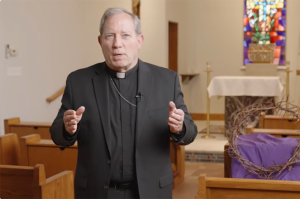Six Major Implications of the Growth of Multisite Churches

It is one of those topics that almost always engenders lively discussion. Some church leaders are incredibly and positively excited about the multisite church movement. Others view the movement with many questions if not some level of suspicion.
But recent studies tell us that we should not ignore this movement. It appears to be here to stay for years to come.
The Current Research
LifeWay Research has looked at multisite churches in recent years. Scott McConnell, the director of LifeWay Research, wrote Multi-site Churches in 2009, an excellent analysis of the movement.
Now a study by Leadership Network and Generis, led by Warren Bird, provides new, head-turning information. Simply stated, the multisite church movement is growing at such a pace that we would be negligent to ignore it. I encourage you to read the full report, while I offer six summary implications from the data.
The Study
Because the concept of multisite churches typically engenders strong opinions, it is not always easy to look at the data objectively. This study, called the Leadership Network/Generis Multisite Church Scorecard, however, looked at 535 multisite churches. Of those churches, 91 percent were located in the United States. The breadth of the research is such that we must study the information seriously.
As a point of full disclosure, I led a church in Birmingham, Alabama to become multisite in 1992. I had very few models to follow back then, and the challenges were many. The church I served as pastor was landlocked, and starting a new campus seemed logical to me.
I am also currently a member of a multisite church, Brentwood Baptist Church. I have seen up close an intentional strategy to reach many areas around Nashville and Middle Tennessee through the multisite approach.
The Implications
The implications of this study are many. For now, let me share six key issues that jumped to the forefront when I read the report.
- Multisite as a growth and evangelistic strategy seems to be successful thus far. One of the most incredible data points in the study was the percentage of multisite churches that are growing: 85 percent. Such a high percentage is unprecedented in almost any previous approaches to evangelism and growth in the past century. These churches are also much more evangelistic than those in most other studies, certainly those represented by studies I have led.
- More struggling churches see merging with a multisite church as their best option for health or even survival. The leaders of the multisite churches noted an increased frequency in contact by leaders of struggling churches. One third of all the sites started in the study were the results of mergers. Stated simply, many struggling churches are seeking to be acquired by multisite churches. This new reality has both practical and ecclesiological implications for the future.
- The campus pastor is likely the fastest growing position in local churches, especially in the United States. We have focused for years on training pastors and, often, age-specific or ministry-specific ministry leaders. What type of training does a campus pastor need? Who or what will provide it?
- Multisite churches are more likely to hire staff ministers internally. While this trend is growing independent of multisite churches, it is certainly being accelerated by multisite churches. Again, the implications for ministry and theological training are many.
- An increased number of smaller churches are becoming multisite. The trend of multisite churches has been mostly the work of larger churches, primarily megachurches. Now the median worship attendance of a multisite church is around 1,000, and churches as small as 100 to 400 in attendance are going multisite as well.
- More churchgoers are attending multisite churches. Currently about one in ten Protestant attendees are in a multisite church each week. That number will continue to increase.
The Future
I am thankful for the work of Warren Bird, Leadership Network, and Generis. They have uncovered many new findings about multisite churches. For those of us who love local churches, we must stay informed about such developments. God is using new churches, established churches, and multisite churches all across the world. But, at least from this study, the multisite movement is making gains we had not seen in other segments.




























